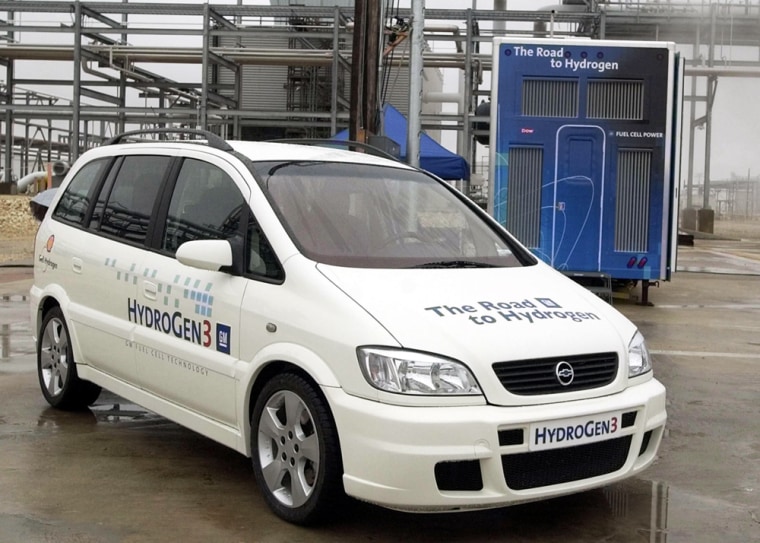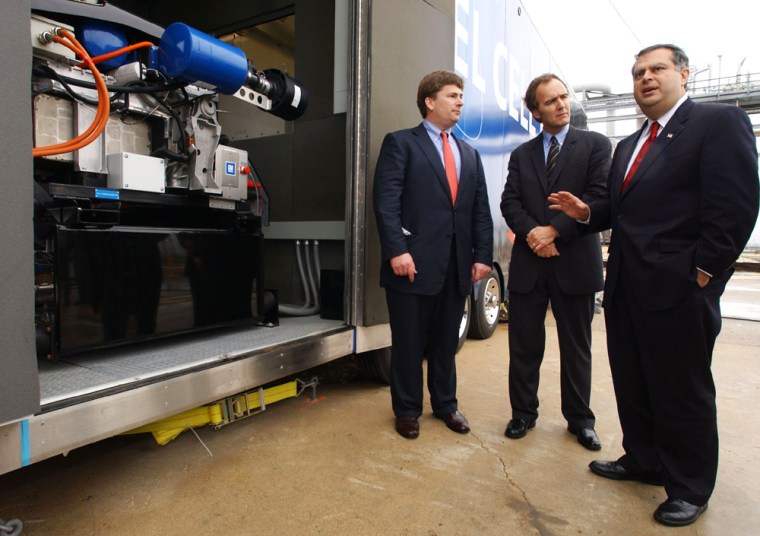General Motors Corp. isn’t just producing cars these days.
The world’s largest auto maker and Dow Chemical Co. on Tuesday began generating electricity when Energy Secretary Spencer Abraham flipped a switch combining GM’s fuel cells with excess hydrogen from the Dow Chemical Co. plant in Freeport, Texas.
The resulting electricity, produced as hydrogen flows over the metal plates in fuel cells, eventually could power 2 percent of the chemical plant, or enough electricity to power 25,000 homes for a year.
GM aims for lower costs
“This isn’t some esoteric idea, some pie-in-the-sky theory. This is real,” Abraham said, referring to the agreement that is considered the largest commercial application of fuel cells to date.
Through the deal, which lasts through 2010, GM hopes to reduce the cost of fuel cell technology so it can put the battery-like power producers into vehicles by 2010. Neither company would say how much Dow is paying the automaker for the electricity.
Dow, which produces chemicals, plastics and fertilizer, approached GM about a deal in October 2002. Last year, the companies announced an agreement to produce $50 million worth of electricity for the Dow plant, located about 55 miles south of Houston.
Dow’s chemical production makes excess hydrogen the auto maker needs to continue its study of fuel cells.
Through the deal, Dow gets to reduce its use of natural gas for power and expands its sources of electricity, said Dow vice president Theo Walthie. While natural gas is much cleaner than coal for producing power, hydrogen through a fuel cell is even cleaner, emitting only water.
'Potential is there'
Abraham and others who attended Tuesday’s ceremony said they hoped the deal would help drive down the cost of fuel cell technology, which is currently too expensive for consumer use.
The first fuel cell was built in 1839 but didn’t get much interest as an electricity generator until the 1960s during NASA’s Apollo space program. Fuel cells continue to remain an essential part of the space program.

The diesel engine, invented in 1894, left “no real incentive to pick up fuel cells at that time,” University of Houston chemistry professor Allan Jacobson said.
However, their efficiency and the recent push for cleaner energy sources has led to a resurgence in research, he said.
“Even if all the questions about it have yet to be answered, the potential is there,” Perry said. “But we won’t know the answers, unless we dare to innovate, to experiment, to explore.”
